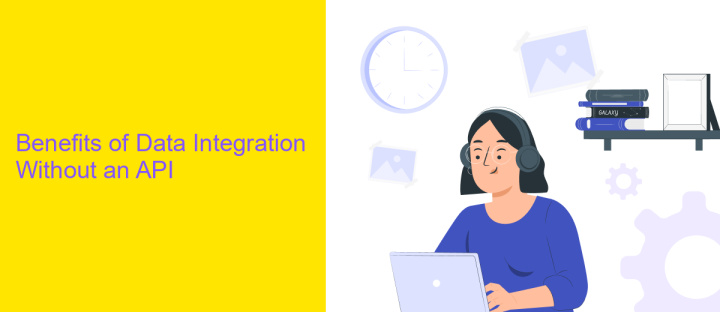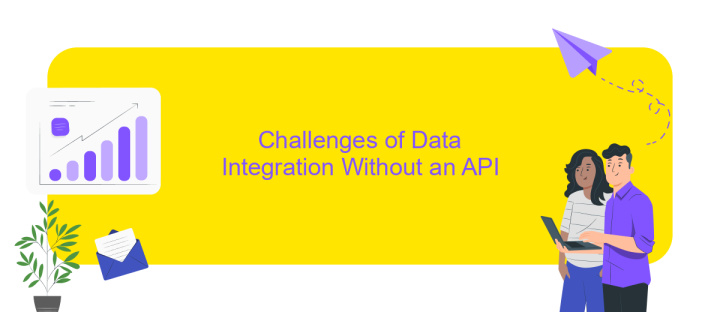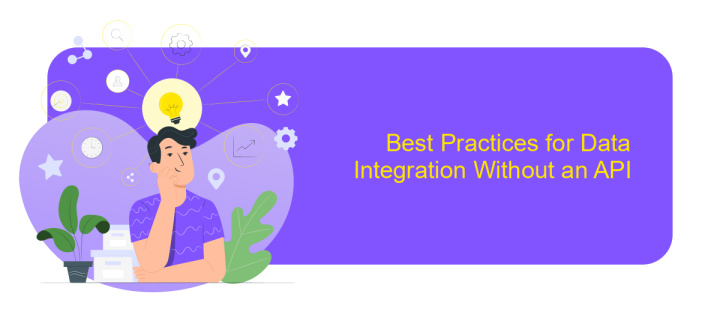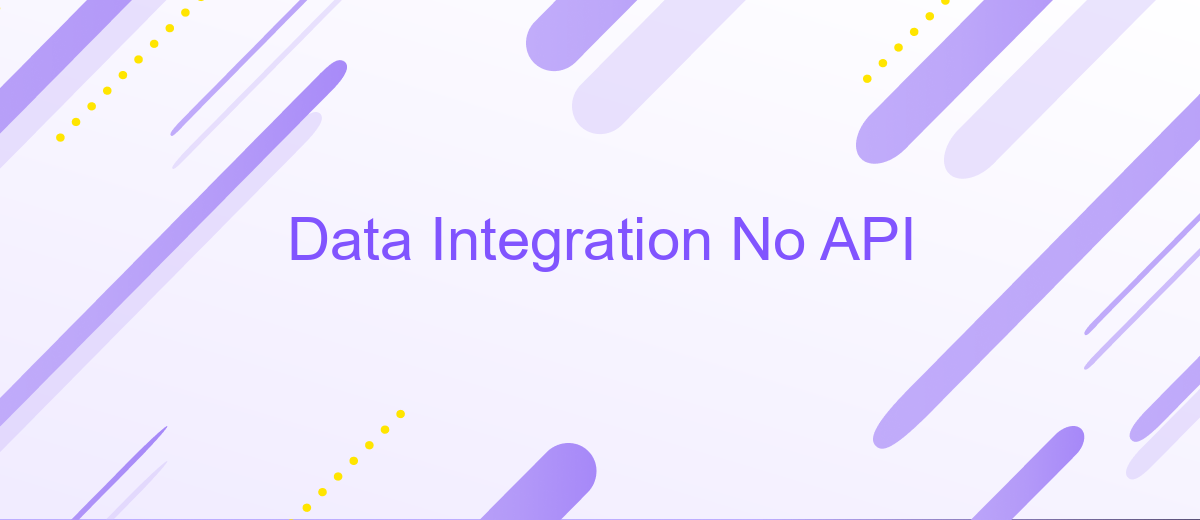Data Integration No API
Data integration without APIs is transforming how businesses handle data. By leveraging modern tools and techniques, organizations can seamlessly merge disparate data sources without the need for complex API configurations. This approach not only simplifies the integration process but also enhances data accessibility, enabling more efficient and informed decision-making. Explore the innovative strategies that make API-free data integration a game-changer.
Introduction
Data integration is a critical component in modern business operations, enabling seamless communication between disparate systems. Traditional methods often rely on APIs to facilitate this integration, but what if there was a way to achieve data integration without APIs? This approach can simplify the process, reduce overhead, and increase efficiency.
- Eliminates dependency on third-party APIs
- Reduces integration complexity
- Enhances data security and control
Exploring data integration without APIs opens up new avenues for businesses to streamline their operations. By leveraging alternative methods such as direct database connections, file transfers, and middleware solutions, organizations can achieve robust data integration. This not only ensures data consistency but also fosters a more agile and responsive IT environment.
Benefits of Data Integration Without an API

Data integration without an API can offer significant benefits, particularly in terms of simplicity and accessibility. Without the need for complex coding or technical expertise, businesses can streamline their data processes more efficiently. This approach often involves using user-friendly platforms that facilitate data synchronization and transfer without requiring in-depth programming knowledge. As a result, companies can save time and resources, allowing them to focus on their core operations rather than getting bogged down by technical challenges.
One such platform that excels in this area is ApiX-Drive. It enables businesses to set up data integrations quickly and easily, connecting various applications and services without the need for an API. By leveraging ApiX-Drive, organizations can automate data workflows, reduce manual data entry errors, and ensure data consistency across different systems. This not only enhances operational efficiency but also improves data accuracy and reliability, making it an invaluable tool for businesses looking to optimize their data management processes.
Challenges of Data Integration Without an API

Integrating data without an API presents several significant challenges that can hinder the efficiency and accuracy of the process. Without standardized interfaces, organizations often struggle with data compatibility issues, leading to increased complexity and potential errors.
- Data Inconsistency: Without APIs, different systems may store and format data differently, making it difficult to ensure consistency across platforms.
- Manual Data Handling: The absence of automated data transfer mechanisms necessitates manual data entry or custom scripts, which are time-consuming and prone to human error.
- Scalability Issues: As data volumes grow, managing integration manually becomes increasingly unmanageable, leading to bottlenecks and inefficiencies.
- Security Risks: Transferring data without secure APIs can expose sensitive information to potential breaches and unauthorized access.
- Maintenance Overhead: Custom integration solutions require continuous maintenance and updates, diverting resources from core business activities.
In conclusion, while it is possible to integrate data without APIs, the process is fraught with challenges that can significantly impact the reliability, security, and efficiency of data management. Organizations must weigh these challenges carefully and consider investing in API-based solutions to streamline their data integration efforts.
Best Practices for Data Integration Without an API

Integrating data without an API can be challenging, but with the right strategies, it is possible to achieve seamless data flow. One of the first steps is to ensure data consistency across all sources. This can be accomplished by standardizing data formats and structures before integration.
Another critical aspect is to maintain data integrity throughout the process. This involves validating data at each step to ensure it remains accurate and uncorrupted. Utilizing robust data validation techniques can help mitigate errors and discrepancies.
- Utilize ETL (Extract, Transform, Load) tools to streamline data processing.
- Leverage data mapping techniques to align different data sources.
- Implement error-handling mechanisms to catch and resolve issues promptly.
- Regularly audit and verify integrated data to maintain accuracy.
Finally, documenting the entire data integration process is essential. This not only helps in troubleshooting but also ensures that the integration can be replicated or modified in the future. Proper documentation can serve as a valuable reference for maintaining data quality and consistency.
- Automate the work of an online store or landing
- Empower through integration
- Don't spend money on programmers and integrators
- Save time by automating routine tasks
Use Cases for Data Integration Without an API
Data integration without an API is often necessary in scenarios where APIs are unavailable or impractical. For instance, legacy systems might not support APIs, requiring alternative methods like direct database access or file-based integration. Businesses can use ETL (Extract, Transform, Load) tools to move data between systems, ensuring consistency and accuracy. This approach is beneficial for companies looking to integrate data from various sources without the need for custom API development, which can be time-consuming and costly.
Another use case involves integrating data from third-party services that do not provide APIs. Tools like ApiX-Drive can facilitate this process by offering pre-built connectors and automation workflows. This enables seamless data transfer between disparate systems, enhancing operational efficiency. Moreover, ApiX-Drive supports various data formats, making it easier to handle different types of data without extensive manual intervention. By leveraging such tools, businesses can achieve effective data integration, ensuring that all systems work harmoniously without the need for complex API configurations.
FAQ
What is Data Integration without an API?
Why would I need Data Integration without an API?
How can I perform Data Integration without using APIs?
What are the challenges of Data Integration without an API?
Are there tools to help with Data Integration without an API?
Apix-Drive is a simple and efficient system connector that will help you automate routine tasks and optimize business processes. You can save time and money, direct these resources to more important purposes. Test ApiX-Drive and make sure that this tool will relieve your employees and after 5 minutes of settings your business will start working faster.


